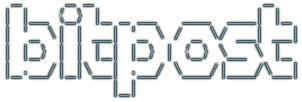This problem turned out to be due to the very long relative paths that Visual Studio created to the gsoap-generated files. (continued…)
Having all your source code closed is really annoying and is automatically solved with this Visual Studio package addon.
Also, this is my first test of blog posts getting autoposted to Google Plus. Prepare for more geekdom and nerdiness, my g+ friends.
And keeping with the theme of including a graphic in my posts, let’s see how this gets cross-posted…

Here are quick instructions to get this done and start using TagLib in your project to manipulate tag data in your music files. I had to pull this together from about 5 different places…
NOTE: This was moved to the wiki, because persistent articles belong on wikis, not blogs! 🙂
Why is this not documented well? I don’t understand why people spend man-years creating great software and then don’t bother to document it – did I just miss it somewhere? Prolly…
I’m the last person to praise Microsoft – with the amount of money they bleed from the human race, there is no room to give them any slack. To their credit, corporations of their magnitude almost always decay into bureaucracy and inefficiency, and they could be worse. Case in point, Visual Studio. It kicks ass. Here’s a quick rundown of what it does for me when debugging my Qt app. This is in comparison to Qt Creator, which is awesomely streamlined and elegant. But when you are debugging, every bit of comfort is gold:
- if you set things up as i did, you can step right through the Qt source with no pain
- the watch window takes far fewer steps to manipulate
- the debugger can dereference pointers better
- the debugger can dereference iterators better
- code completion in the editor can also handle dereferenced iterators
- debugger can show long strings much better
- you can step over a function back up to the caller without dropping to the next line of code in the call routine (for when multiple calls take place on one line)
- debugger doesn’t head south when often browsing out of array bounds (inevitable if you are watching variables)
I’ll add to this list as seems fit. I should probably also start a list of the advantages of Qt Creator, it is really nice to work with on linux and Mac. Including Eclipse would round out the list nicely… but for now, back to teh coding. :> Check out this recent post for instructions on getting VS set up with Qt, it’s easy.
Qt’s Phonon library has an awesome goal: abstract video and audio services to simplify cross-platform development. It has worked great for me out of the box using Qt 4.7 on linux and Mac OS X. Windows setup took a bit of elbow grease. Here are the cheatnotes to get you through it quickly.
NOTE: The Qt mingw setup worked fine for me when I was setting up my first Windows development environment, do not hesitate to go that route. All you need is the Qt SDK for Windows. Free is good!
But this time around, I opted for using Visual Studio 2010, since I already had it installed and I wanted to compare. I’ve read that there is no support for using the open-source-licensed Qt with Visual Studio, but the official Qt download page for the Visual Studio Add-In clears things up – it says the add-in “can be used for development together with all Qt licenses”. Let’s fire it up and try it out! (continued…)








